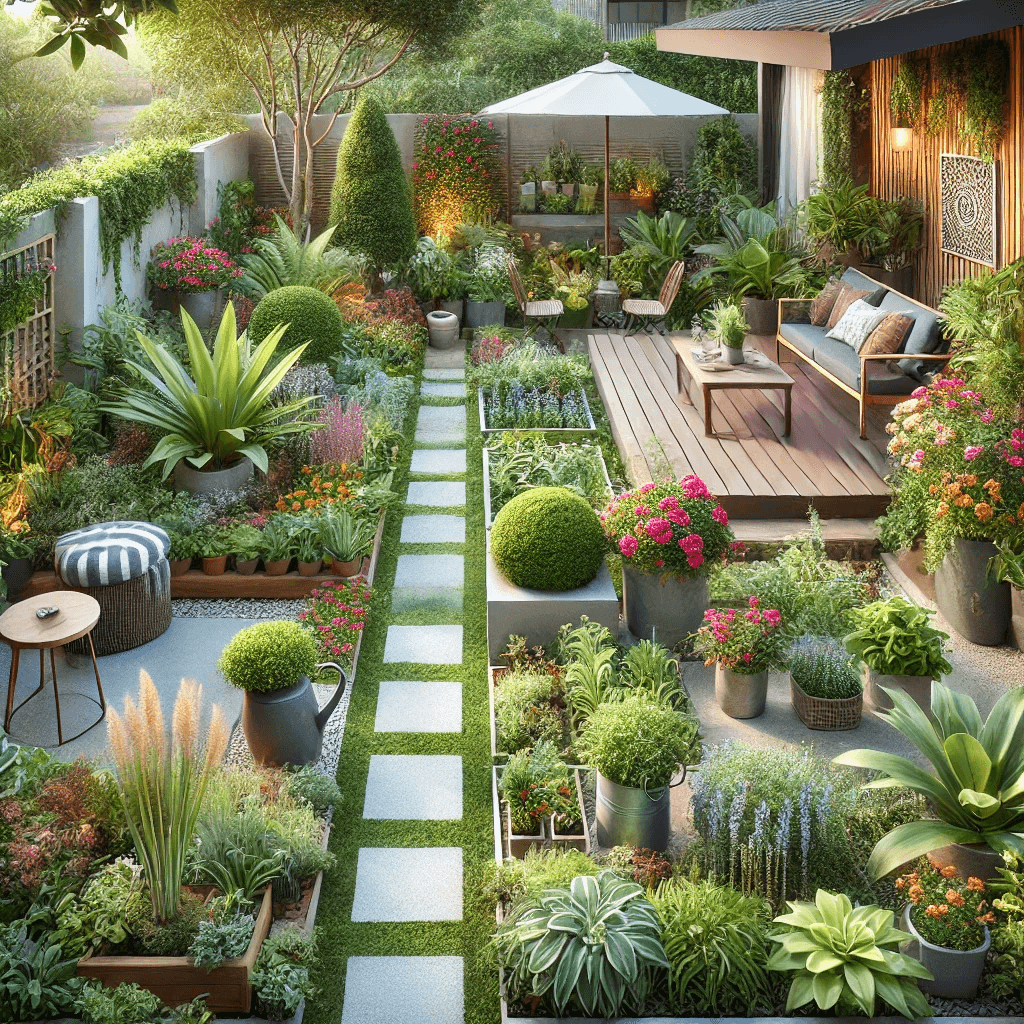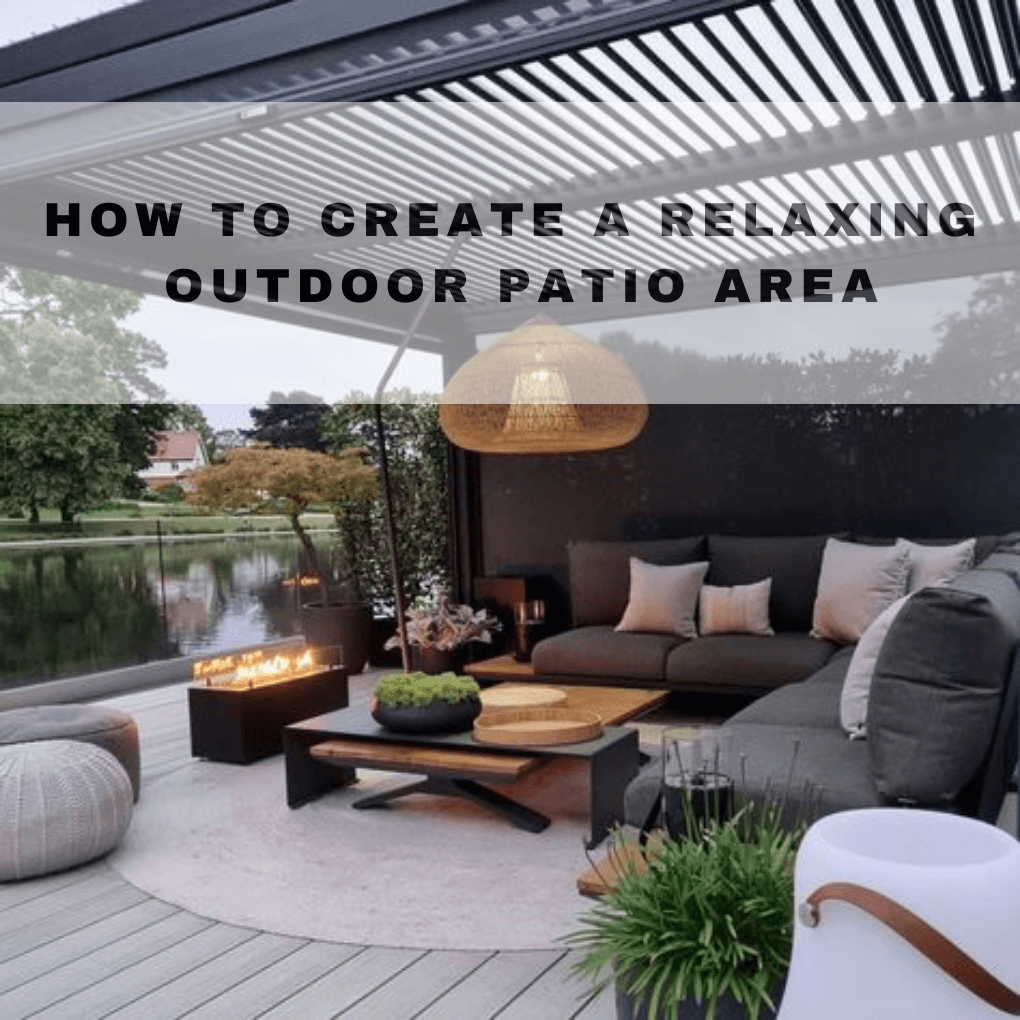Designing a small outdoor garden can be challenging, but with thoughtful planning, you can create a beautiful, functional space. Whether your goal is relaxation, gardening, or entertaining, small gardens can be transformed into cozy, enjoyable areas. By utilizing space efficiently and incorporating clever design ideas, even the tiniest garden can meet all your needs.
Consider the Function of Your Garden
The first step in designing any garden is to determine its purpose. The function will guide all other design decisions, from plant selection to furniture arrangement.
Decide on the Primary Purpose
Ask yourself what you want from your garden. Is it a relaxing retreat, a place for outdoor meals, or a space to grow plants? The function of the garden will help you prioritize elements in the design. For example, if relaxation is your goal, you’ll want comfortable seating and calming greenery. If gardening is your focus, you’ll need space for raised beds or containers.
Plan for Multiple Uses
Small gardens benefit from versatility. You can combine different functions within one space, such as creating both a seating area and a small vegetable garden. Dividing your garden into sections allows you to maximize space without feeling cramped.
- Create a small table for outdoor dining.
- Add vertical planters for herbs or flowers.
- Choose foldable or stackable furniture for flexibility.
Planning for multiple uses will help you get the most out of your space.
Maximize Vertical Space
Maximizing vertical space is a smart strategy when working with a small garden. By growing plants upward rather than outward, you can save space and add visual interest to the design.
Use Vertical Planters and Raised Beds
Vertical gardening is a space-saving solution that allows you to grow more plants without taking up ground space. Vertical planters can be mounted on fences or walls, and raised beds provide efficient ways to grow vegetables or flowers. Raised beds also offer easier access for tending plants and can add a neat, organized look to the garden.
Install Trellises and Ladders for Climbing Plants
Climbing plants, such as ivy or tomatoes, can be trained to grow vertically using trellises or ladders. This frees up the ground for other plants or features while still adding greenery and visual appeal.
- Install trellises for climbing flowers or vegetables.
- Use modular vertical planters for flexibility.
- Mix plants with different growth habits for a layered look.
Using vertical space effectively adds depth and dimension to your garden while saving valuable ground space.
Create a Focal Point
A focal point can help bring order and balance to your small garden. By adding a key feature, you draw attention and create a sense of purpose for the space.
Use a Statement Piece
Consider adding a statement piece, such as a sculpture, a water feature, or a striking plant. A focal point like this will draw the eye and create a sense of cohesion in the space. Position your statement piece strategically to make it the center of attention.
Play with Lighting
Lighting is a great way to highlight key features and create atmosphere. By placing lights around the focal point, you can add a magical touch that makes the garden feel inviting. Solar lights, string lights, or lanterns can illuminate your garden beautifully, especially in the evening.
- Use spotlights to emphasize key elements.
- Wrap lights around trees or trellises for a glowing effect.
- Add soft lighting along pathways for ambiance.
Lighting not only enhances the visual appeal but also extends the usability of your garden into the evening hours.
Choose the Right Furniture
In a small garden, furniture plays a crucial role. It’s important to select pieces that are compact and functional, without overcrowding the space.
Opt for Space-Saving Furniture
Look for furniture that can be easily moved or stored when not in use. Foldable or stackable chairs and tables are perfect for small gardens. Consider multi-functional furniture, such as benches with built-in storage. This will allow you to keep the space tidy and organized.
- Use foldable tables and chairs to maximize flexibility.
- Look for benches with hidden storage to keep tools or cushions.
- Consider modular furniture that can be rearranged.
Keep It Comfortable but Simple
Comfort should not be sacrificed for space. Choose a few simple, comfortable seating options. A small bench or a couple of chairs are ideal for compact gardens. Adding a hammock or swing chair can provide a relaxed atmosphere.
- Keep seating arrangements simple to avoid overcrowding.
- Look for sleek, modern furniture designs.
- Add cushions for comfort without overloading the space.
Carefully chosen, space-saving furniture will make your garden feel cozy and functional.
Use Layering to Add Depth
Layering creates a sense of depth in any garden, even a small one. By varying plant heights and using different textures, you can create a dynamic, inviting atmosphere.
Mix Plants of Different Heights
Layering plants of varying heights will help give your garden a more expansive feel. Place taller plants, such as shrubs or grasses, at the back of the space, and position shorter plants in the front. This creates a sense of depth and balance.
Add Different Textures
Incorporate plants with contrasting textures to add visual interest. For example, pair soft-leaved plants with spiky ones to create a variety of shapes and forms. Mixing materials for paths or furniture can also add texture to the garden.
- Place taller plants in the back and shorter ones in front.
- Combine smooth-leafed plants with spiky or ornamental ones.
- Use varied materials for containers, paths, and furniture to enhance texture.
Layering gives your garden a more inviting, multi-dimensional look, making it feel larger than it is.
Embrace Minimalism
In a small garden, less can often be more. A minimalist design can help the space feel more open and less cluttered.
Avoid Overcrowding
One of the most important principles in small garden design is to avoid overcrowding. Too many plants or accessories can make the space feel cramped. Instead, focus on a few key plants or features, leaving space between them to allow the garden to “breathe.”
- Limit the number of plants to prevent clutter.
- Use a few decorative elements, like sculptures or stones.
- Keep pathways and walkways clear and unobstructed.
Focus on Clean Lines
A minimalist garden often uses clean lines and simple shapes. Stick to geometric patterns for paths, plant beds, and furniture to create a sleek, modern look. Avoid overly ornate designs, as they can overwhelm a small space.
- Use straight lines for paths and plant beds.
- Choose sleek, simple furniture designs.
- Keep decorations minimal to enhance the natural beauty.
Minimalism helps to create a calm and organized atmosphere, making the garden feel more spacious.
Conclusion
Designing a small garden is all about making the most of limited space. By considering the purpose of the garden, maximizing vertical space, creating a focal point, and choosing functional furniture, you can create a beautiful and functional outdoor space. Simple design principles like layering and minimalism can help make your garden feel larger and more inviting. With a thoughtful approach, your small outdoor space can become a relaxing and enjoyable retreat.




